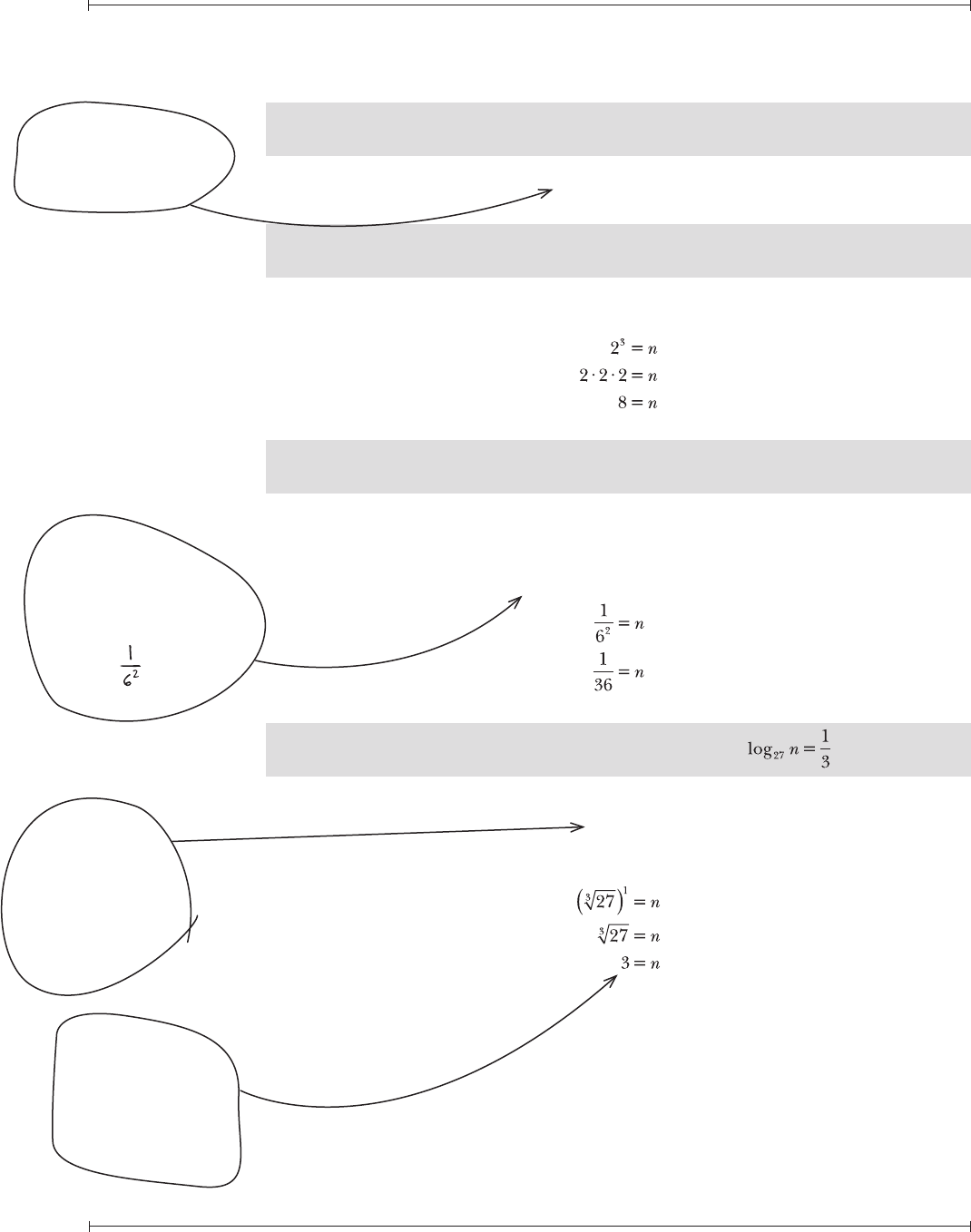
Chapter Eighteen — Logarithmic Functions
The Humongous Book of Algebra Problems
400
Evaluating Logarithmic Expressions
Given log
a
b = c, nd a, b, or c
18.1 Express the logarithmic equation log
a
b = c as an exponential equation.
The logarithmic equation log
a
b = c is equivalent to the exponential equation
a
c
= b.
18.2 Identify the value of n that completes the equation: log
2
n = 3.
According to Problem 18.1, log
2
n = 3 is equivalent to the exponential equation
2
3
= n.
18.3 Identify the value of n that completes the equation: log
6
n = –2.
Rewrite the logarithmic equation as an exponential equation.
6
–2
= n
Eliminate the negative exponent and simplify.
18.4 Identify the value of n that completes the equation: .
Rewrite the logarithmic equation as an exponential equation.
27
1/3
= n
Rewrite 27
1/3
as a radical expression and simplify.
This
expression is read
“log base a of b
equals c.”
A negative
power means “the
reciprocal of.” The
reciprocal
of 6
2
is .
If you
need to review
how fractional
exponents work, ip
back to Problems
13.13–13.17.
The cube
root of 27 is 3
because 3 cubed
equals 27.

Chapter Eighteen — Logarithmic Functions
The Humongous Book of Algebra Problems
401
18.5 Identify the value of n that completes the equation: log
4
16 = n.
Rewrite the logarithmic equation as an exponential equation.
4
n
= 16
Write both sides of the equation as powers of 4.
18.6 Identify the value of n that completes the equation: log
25
5 = n.
Rewrite the logarithmic equation as an exponential equation.
25
n
= 5
Write both sides of the equation as powers of 5 and solve for n.
18.7 Identify the value of n that completes the equation: log
10
10 = n.
Rewrite the logarithmic equation as an exponential equation.
10
n
= 10
Write both sides of the equation as powers of 10 and solve for n.
18.8 Identify the value of n that completes the equation: log
n
1,000 = 3.
Rewrite the logarithmic equation as an exponential equation.
n
3
= 1,000
Solve for n by taking the cube root of both sides of the equation.
If two
equal bases
are raised
to exponents
and the results
are equal, the
exponents must be
equal as well. In
other words, you
can drop the
bases and set
the powers
equal.
5
2
is raised
to the n power.
When something to
a power is raised to
a power, multiply the
exponents:
(5
2
)
n
= 5
2
˙
n
= 5
2n
.
The expression
log
c
c always equals
1; c can be any
pos-itive number
except 1.
..................Content has been hidden....................
You can't read the all page of ebook, please click here login for view all page.
